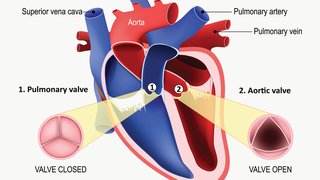
Understanding the Importance of Exercise for Heart Health
Today is a perfect time to get moving on your fitness goals. Regular exercise does more than help you lose weight and build muscle — although it’s definitely good for those reasons!
The Benefits of Aerobic Exercise
Aerobic exercise, also known as “cardio” exercise, uses repetitive contraction of large muscle groups to get your heart beating faster and is the most beneficial type of exercise for your cardiovascular system (your heart and blood vessels). Regular cardio workouts can:
- Strengthen your heart and blood vessels
- Improve the flow of oxygen throughout your body
- Lower your blood pressure and cholesterol
- Reduce your risk for heart disease, diabetes, Alzheimer’s disease, stroke, and some kinds of cancer
What’s the ‘best’ cardio workout?
My patients often ask me, “What’s the best type of exercise for heart health?” Here’s what I tell them: I don’t care what type of exercise you do as long as you do something!
There is no “magic bullet” for exercise. There’s no “only way” to do it. For example, I’m a cross-trainer. I may work out at the gym for 30 minutes total, but I’ll use three different machines for 10 minutes each to switch it up and keep exercise more interesting for me.
You don’t have to employ the same exercise strategy that I do to get the heart-healthy benefits of cardio exercise. What’s most important is that you exercise regularly. One way you can make that easier is to make it a part of your everyday routine.
We all have a daily routine for personal hygiene — brushing our teeth, taking a shower, and so on. Exercise should be on that list. A lifelong commitment to regular cardio exercise can preserve your heart’s function and keep it “youthful” over the course of your life.
Regular Cardio Exercise for a Healthy Heart

I recommend exercising a minimum of four to five days each week. One key part of this schedule is to vary the types and intensity of exercise you do on different days. By changing up your exercise routine regularly, you’ll work different muscles and lower your risk for overuse injuries. You also can avoid the trap of doing the same thing over and over until you get bored and quit altogether.
I recommend moderate-intensity exercise two or three days a week for at least 30 minutes. You should break a sweat and be a little short of breath during good moderate-intensity exercise, but still be able to carry on a conversation.
Incorporating Longer Activities in Your Routine
Take part in a longer activity — at least an hour or more — one day a week as part of your exercise routine. This can be a high-intensity activity such as a Zumba class or a lower-intensity activity such as a long bike ride or a round of golf. The activity itself doesn’t matter as long as you enjoy doing it and it keeps you moving awhile.
If you’re counting, I’ve covered three days of exercise. The fourth day — and fifth if you’re up for a challenge — should include high-intensity training. High-intensity training stimulates different muscles and different responses from your heart and blood vessels than lower-intensity training.
Exploring High-Intensity Interval Training (HIIT)
One type of high-intensity training I personally enjoy involves exercising as hard as you can for a short period, resting briefly, and exercising again as hard as you can for another short period (also called high-intensity interval training, or HIIT). There are many types of HIIT. Personally, I like the 4x4. It’s an exercise routine used by the Norwegian ski team, and it involves exercising as hard as you can for four minutes, followed by three minutes of recovery time, for four cycles total.
In addition to cardio training, strength training one or two days each week is good for your heart and overall health. Strength training makes your muscles stronger and also can improve the strength of your bones and metabolism, which can help you avoid diabetes and other conditions.
It is important to note that strength training also comes in many forms, and doesn’t have to be just “pumping iron” in a gym. Pilates, body weight calisthenics (e.g., crossfit if you are up for it), even strength yoga or tai chi can build strength and balance and are great additions to a workout plan.
Structuring Your Exercise Schedule
The order of the days in which you do your moderate-intensity, high-intensity, longer exercise, and strength training isn’t important. You may want to space out the HIIT and strength training to give your muscles a day to recover, avoid injury, and get the most out of your workout time. Weekends or days off work might be a good time to complete your longer workouts.
The Heart of the Matter
In April 2018, our team published the results of a two-year, National Institutes of Health-sponsored study looking at how exercise affects participants’ heart health. We studied about 60 middle-aged men and women (average age 53 yrs) who had not previously exercised on a regular basis, and used a heart catheter to measure the flexibility or “youthfulness” of the heart after 2 years of exercise training, or a control group practice balance and flexibility exercises.
The results of the study were quite compelling, and showed that it is possible to reverse some of the consequences of a sedentary lifestyle if you commit to a heart-healthy exercise routine in late middle age (40-64 yrs). The study was published in the flagship journal of the American Heart Association, Circulation, and within just a few months had been viewed by more than half a billion people worldwide. This study has received an “Altmetrics” attention score of 2063, which places it in the top 5% of all research studies published in any journal, and one of the highest scoring publications of all time for Circulation (#4 of 17,352).
Recent Studies on Heart Health Improvement
More recently, in 2021, we published a study of patients in the same age range who are at risk for developing heart disease, such as heart failure because of having a thick heart (generally from high blood pressure) and abnormal blood markers of heart strain. We trained them for a year and they showed a similar improvement in the elasticity, or “youthfulness,” of their heart muscle as we saw in healthy middle-aged individuals. This study shows that dedicated exercise training in middle age can reverse some of the consequences of diseases such as hypertension, and can potentially stave off more serious diseases such as heart failure in the future.
The benefits of a healthy heart for longevity and quality of life are too great to ignore. A regular exercise routine will help you keep your heart healthy for years to come. Jog, swim, golf, hike, play basketball, dance, do yoga — whatever you love to do. The most important thing is to get out there and do it.











